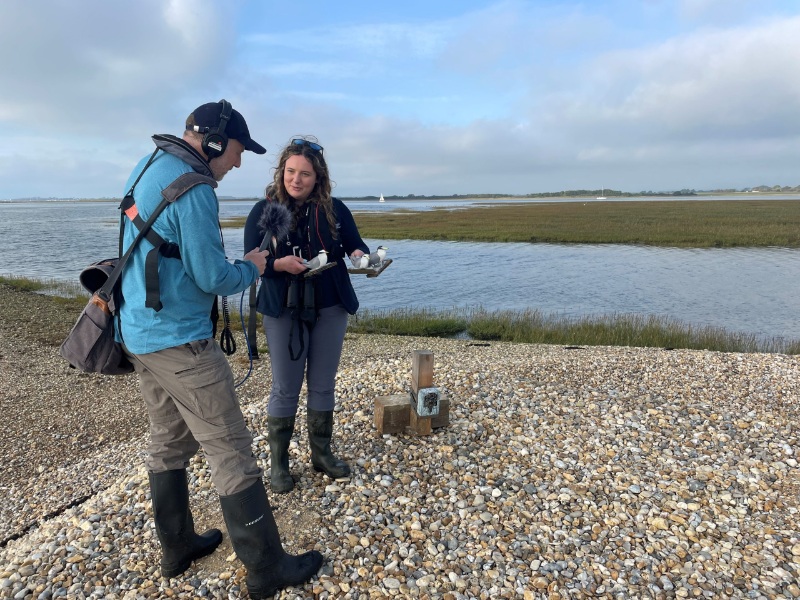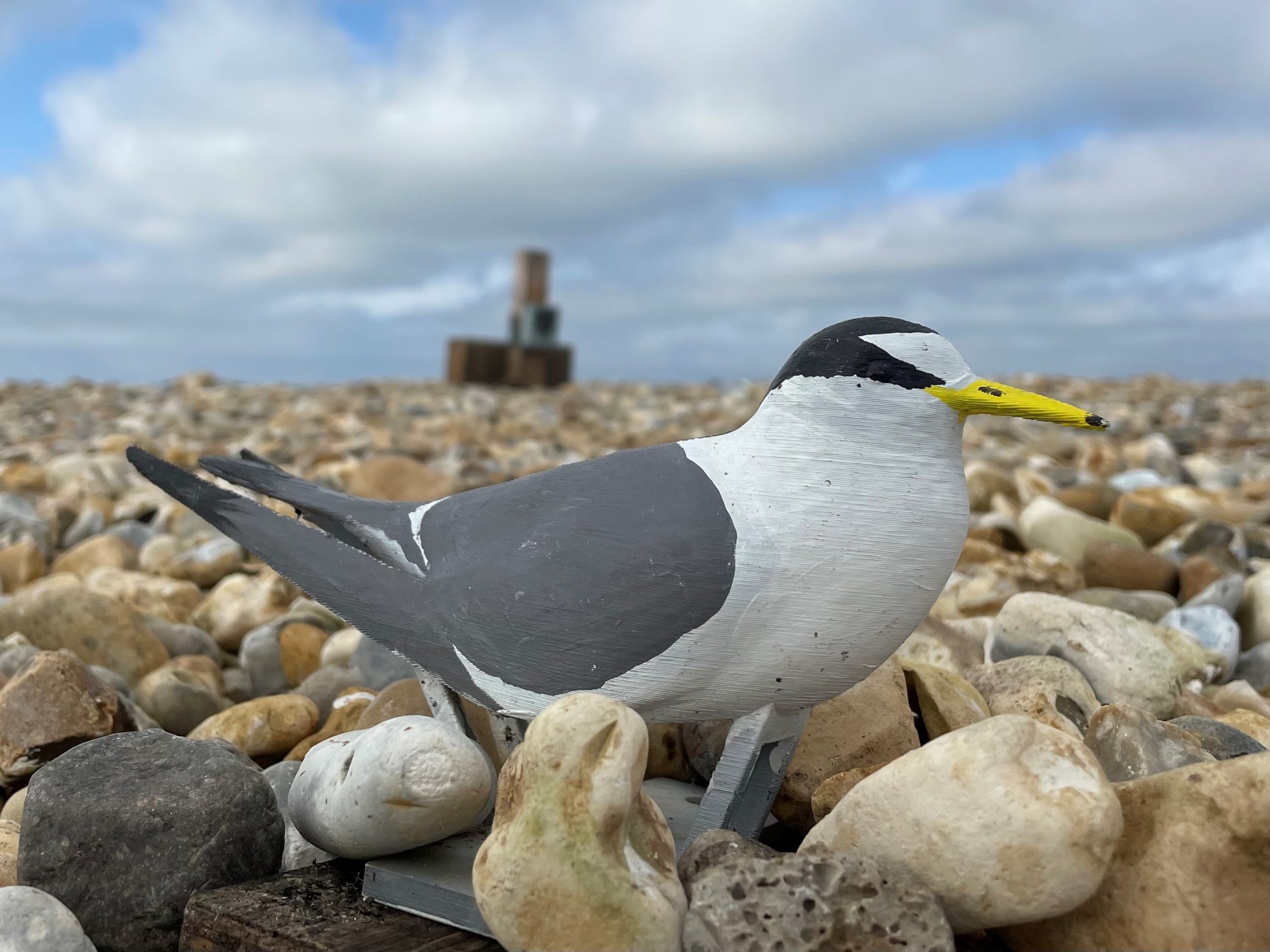The fake terns of Chichester Harbour were the stars of a recent BBC World Service Podcast – People Fixing the World. The podcast featured Chichester Harbour Conservancy’s nature recovery project officer, Jess Vagg talking about the use of “fake” terns. These models, known as “decoys” have been used as part of the Return of the Tern project to revive the tern populations of Chichester Harbour.

Habitat loss and sea level rise have meant that nest sites are regularly washed out on high spring tides and storm surges, with tern populations falling sharply in recent decades. Three species of tern frequent the harbour, Common Tern, Little Tern and Sandwich Tern, but very few chicks were successfully fledging. The Return of the Tern project is addressing the problem by providing new nesting habitat for terns in the form of rafts and increasing the elevation of a shingle island above the highest tides.
But how do terns know that these are safe and desirable places to nest? This is where the “fake” birds come in…
The decoys are placed on the rafts and shingle islands, and to a passing tern they’ll look like the real thing. It’s an indicator that it’s a great place to nest, somewhere safe, and they really do work! Since deploying the rafts with the decoys, over 100 Common Terns have fledged within the Chichester Harbour since 2019.
Decoy birds have been used in nature conservation since the 1970s, but these model terns have a modern twist. They were printed by our talented apprentice ranger Katie in recycled plastic filament using a 3D printer, then painted to look like Common or Little Terns by local schoolchildren.
Would you like to know more? Tune in to the podcast episode on BBC Sounds:
https://www.bbc.co.uk/sounds/play/p0h0ww6w

